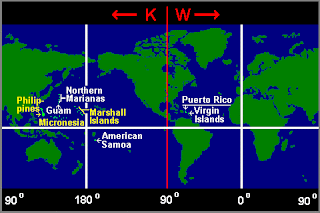What I learned week 12
What I learned week 12
Dr. Kahn gave us an introduction to the
different government drug payments plans such as Medicare Parts B&D;
Medicaid and the VA system. She also reinforced our knowledge of pharmacy
benefit managers, and P&T committees, which we have discussed before with
other speakers and learned upon in several readings.
Dr. Kahn began the discussion talking about
risk which I thought was very interesting. There are two types of risk, pure
and speculative. Pure risk is a category of risk in which loss is the only
possible outcome, such as a fire. Then there is speculative risk, which is a category
of risk where there is a chance of gain as well as loss; such as gambling or
starting a new business. Thus, pure risk is insurable to an extent whereas
speculative risk is not insurable. You cannot buy insurance before you gamble
to protect your money, it doesn’t work like that. Dr. Kahn started the
conversation with these two definitions to further elaborate on the topic of
health insurance in the U.S and the impact of chronic diseases on health
spending. “Amount spent each year
treating patients with one or more chronic disease. Chronic illnesses account
for 75% of the $2.2 trillion we
spend on health care each year in the U.S. Investing in prevention and disease
management will save lives and money now and well into the future” And, in the
U.S we insure chrinic illness with health coverage plans such as
Medicare Parts B&D; Medicaid and the VA system. This ties back to risk, so
is chrinic disease pure risk or speculative risk. One can say both, but here
Dr. Kahn’s opinion was that chronic diseases is speculative risk and in fact it
should not be insured. Chronic Diseases: The
Leading Causes of Death and Disability in the United States. Chronic
diseases and conditions—such
as heart disease, stroke,
cancer, type 2 diabetes, obesity, and arthritis—are among the most common,
costly, and preventable of all health problems. Many of these diseases are
completely preventable with healthier eating, exercise, tobacco and drug free
lifestyles as well as other healthy life choices such as frequent doctor
visits. Thus, the U.S should not insure chronic illness because we are
promoting unhealthy lifestyles. If we continue to insure these bad decisions,
Americans are going to continue to lead unhealthy lifestyles because they know
they have health coverage as a crutch. If that crutch wasn’t there and if
Americans truly faced the expenses and consequences of chronic illness, they
would lead healthier lives and chronic disease numbers would rapidly shrink.
I was more interested in the discussion about
Medicare Parts B&D; Medicaid and the VA system simply because I wasn’t as
knowledgeable about the topic. Dr. Kahn began Thursdays discussion with
Medicaid because it’s] simply easier to understand. Medicaid is the largest
health care program in the U.S with 60 million low income enrollees. Medicaid
is join financed by the federal government and the states, so the federal
government matches state spending 1:1. Medicaid is also administered by the
states, they set their own policies for eligibility, enrollment, spending but
hey must follow broad general guidelines set forth by the federal government.
The state controls what will go into the formulary, and there is only formulary
per state. Something I thought was interesting is that one would assume, okay
every state has their own Medicaid formulary so there should be 50 formularies,
but no. In fact, there are 56 Medicaid programs, this is because each territory
also had some Medicaid program/formularies as well as the capital city of the
U.S, Washington D.C. So, all 50 states, Washington D.C and the five U.S
territories, America Samoa, Guam, Northern Mariana Islands, Puerto Rico and the
U.S Virgin Islands, equal 56 Medicaid programs.
Guide to the 5 U.S foreign territories:
Dr.
Kahn then went into Medicare, which is more complicated. Part B was established
in 1966 which covered medical insurance: physician services, outpatient
hospital care, x-rays, laboratory and diagnostic tests, dialysis, vaccinations,
chemotherapy, and durable medical equipment. Part D was established in 2006
which covers prescription drug coverage. An issue we discussed with Part D
Medicare is the coverage gap. Most Medicare drug
plans have a coverage gap (also called the "donut hole"). This means
there's a temporary limit on what the drug plan will cover for drugs. “Not
everyone will enter the coverage gap. The coverage gap begins after you and
your drug plan have spent a certain amount for covered drugs. In 2017, once you
and your plan have spent $3,700 on covered drugs, you're in the coverage gap.
This amount may change each year. Also, people with Medicare who get extra
help paying Part D costs won’t enter the
coverage gap (U.S Centers for Medicare &
Medicaid Services) .”
I considered the future for this coverage gap and how it may affect my loves
ones such as my grandma who is using Medicare services. Basically, what I found
is that there is a trend in utilizing generic drugs more and more; this
ultimately slows down the accumulation of money in hopes of never reaching the
peak of $3,700. The percentage people are saving in the coverage gap is
continued to grow into the future. “By 2020, you'll pay no more than 25% for
covered brand-name and generic drugs during the gap—the same percentage you pay
from the time you meet the deductible (if your plan has one) until you reach
the out-of-pocket spending limit (up to $4,950 in 2017; up to $5,000 in 2018).”
U.S Centers for Medicare & Medicaid Services
Bibliography
U.S Centers for Medicare & Medicaid Services. Costs
in the coverage gap. 2017.
https://www.medicare.gov/part-d/costs/coverage-gap/part-d-coverage-gap.html.
20 11 2017.


Comments
Post a Comment